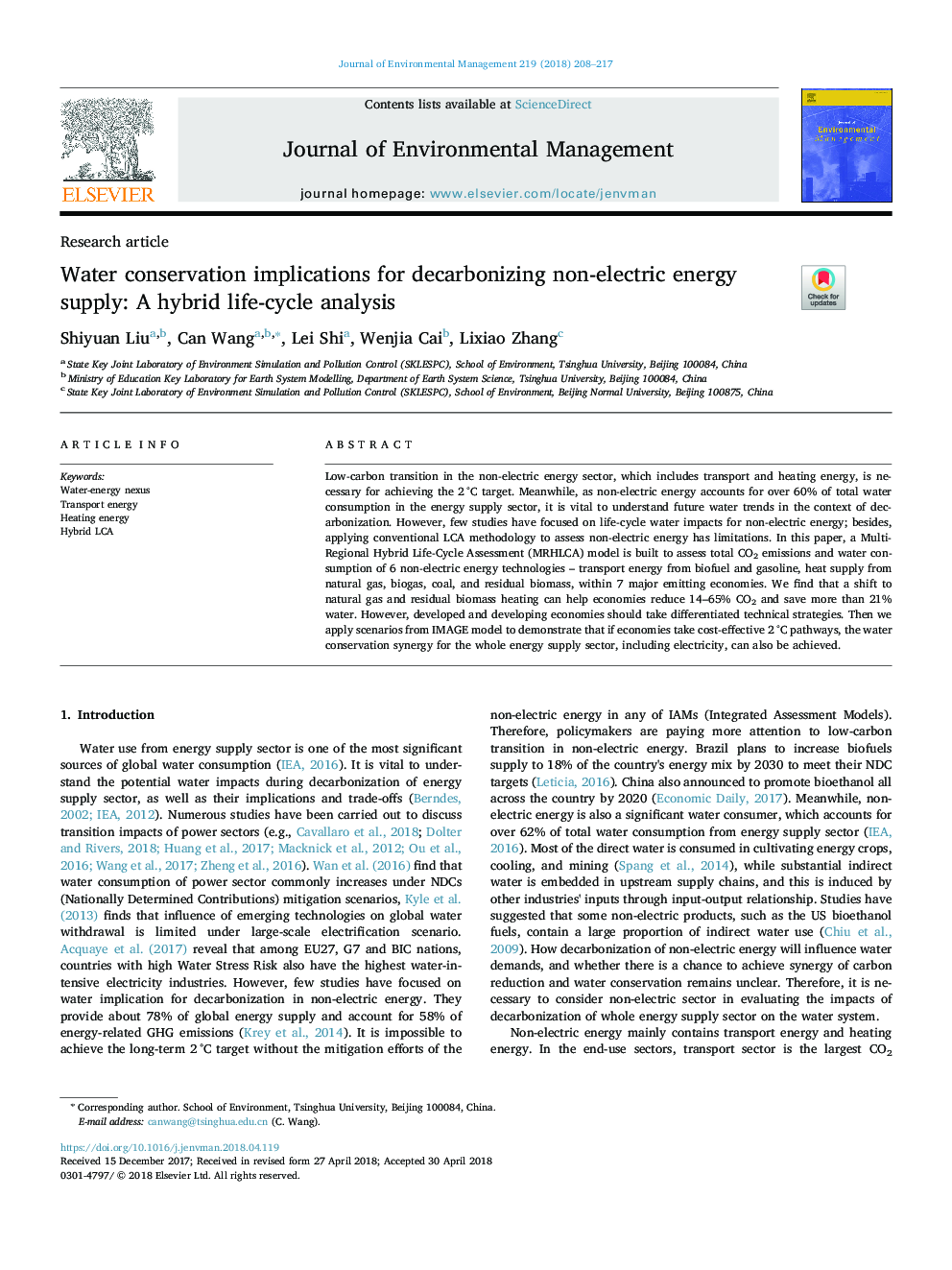| Article ID | Journal | Published Year | Pages | File Type |
|---|---|---|---|---|
| 7476694 | Journal of Environmental Management | 2018 | 10 Pages |
Abstract
Low-carbon transition in the non-electric energy sector, which includes transport and heating energy, is necessary for achieving the 2â¯Â°C target. Meanwhile, as non-electric energy accounts for over 60% of total water consumption in the energy supply sector, it is vital to understand future water trends in the context of decarbonization. However, few studies have focused on life-cycle water impacts for non-electric energy; besides, applying conventional LCA methodology to assess non-electric energy has limitations. In this paper, a Multi-Regional Hybrid Life-Cycle Assessment (MRHLCA) model is built to assess total CO2 emissions and water consumption of 6 non-electric energy technologies - transport energy from biofuel and gasoline, heat supply from natural gas, biogas, coal, and residual biomass, within 7 major emitting economies. We find that a shift to natural gas and residual biomass heating can help economies reduce 14-65% CO2 and save more than 21% water. However, developed and developing economies should take differentiated technical strategies. Then we apply scenarios from IMAGE model to demonstrate that if economies take cost-effective 2â¯Â°C pathways, the water conservation synergy for the whole energy supply sector, including electricity, can also be achieved.
Related Topics
Physical Sciences and Engineering
Energy
Renewable Energy, Sustainability and the Environment
Authors
Shiyuan Liu, Can Wang, Lei Shi, Wenjia Cai, Lixiao Zhang,
